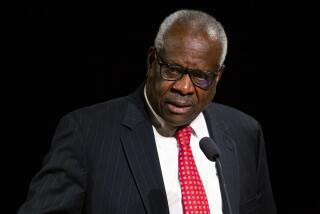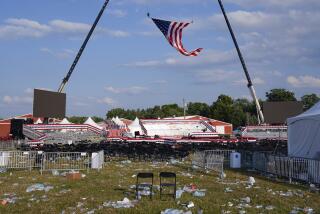What’s in a Name? Allegiance, for Border Reivers
Ever suspected that your ancestors were robbers who terrorized the border between England and Scotland?
Armstrong, Elliot, Graham, Irvine, Johnstone, Kerr, Maxwell, Nixon and Scott were among the families who rode, feuded, fought and plundered over the border area for 350 years.
All the family names of the Border Reivers, whose first allegiance was to their family’s surname, are on a list kept in Carlisle, on the English side of the border.
From the 14th to the 17th centuries, the border was a turbulent place. Raiders stole cattle and women, burned homes and farms and killed rivals without mercy.
From surviving documents such as court and property records and tenure agreements, researchers have identified 74 family names from that region in the 16th and 17th centuries. Some names have changed over the years: Johnstone becoming Johnson, for example.
Reive, meaning to plunder or rob, comes from the dialect of the Scottish Lowlands and borders.
“The folk memory of the Reivers has passed away, but their stories survive in the border ballads,” said David Clarke, senior curator of Tullie House Museum. “We have music about them and [the novelist Sir Walter] Scott collected a lot about them and put them into his novels.”
The museum has made an audio-visual show about Reivers the centerpiece of a $7.5-million restoration.
The bell that rang to warn Carlisle townspeople of raids is in the museum.
Images of galloping horse riders, lookouts, panic-stricken settlers and torched homes and forts are projected on a 30-foot screen.
Voices intone the fear of women waiting for raids: “The Reivers are riding to take what we stole from them that had been ours before.”
The border with Scotland is nine miles north of Carlisle, but in Reiver times it wasn’t so definite.
“North of Carlisle were the debatable lands, territory which was declared to belong to neither Scotland nor England,” Clarke said. “The Reivers operated on both sides of the border.
“It was peat moss and bog country, a huge tract of wet and desolate moorland at the head of the Solway Firth,” he said. “You had to know your way around it or you would have got lost and died. Nowadays it’s mostly quarried for peat or drained for farming.
“Carlisle is a border city and changed hands between the English and Scots several times in the Middle Ages, so the museum took up the Reivers as a very interesting episode,” he said. “It’s become one of our main attractions.”
Clarke said the Reiver story is still little known despite George MacDonald Fraser’s novel, “The Steel Bonnets.”
Fraser was astonished by the Reiver connections he saw in a photograph of Presidents Lyndon B. Johnson and Richard Nixon and evangelist Billy Graham together at Nixon’s inauguration.
Johnson’s visage and figure were straight from Dumfriesshire, where everyone was familiar with such lined and leathery faces, large heads and rangy, rather loose-jointed frames, Fraser said.
The Graham features were less common but still familiar, while Nixon was the perfect example of the Anglo-Scottish frontier: blunt, heavy features, dark complexion, burly body and an air of dour hardness.
Fraser said all three heads would fit perfectly under a steel bonnet.
“The Reivers were thieves, but warriors as well, and without allegiance to anyone outside their clan. Any English or Scottish king going to war here needed the Reivers on his side,” said Chris Dobson, a Carlisle city official.
He said the Reivers were eventually repressed, deported, killed or compelled to emigrate under threat of imprisonment and that many ended up in Ireland.
Haydn Charlsworth specializes in researching family histories around Carlisle and has traced Reiver connections for American clients.
“Once you get back to the 16th century, it’s pretty difficult to make strong links, but the Armstrongs are well documented, and the Johnstones,” Charlsworth said.
“Men who carried arms were liable to be called up by the sheriff so there are records of them.”
Visitors can get a “Reivers Car Trail” leaflet in Carlisle to guide them through 80 miles of Reiver country. It describes one of the most unspoiled and splendid parts of Britain as it was in 1590, just after the defeat of the Spanish Armada.
Towers, churches and castles are still there, though often only as ruins, and so are banks and ditches, remnants of Roman forts built more than 1,200 years before when nearby Hadrian’s Wall was the northernmost frontier of the Roman Empire.
(BEGIN TEXT OF INFOBOX / INFOGRAPHIC)
Reivers by Name
The 74 family names in surviving documents about the Border Reivers:
Archbold, Armstrong
Beattie, Bell, Burns
Carleton, Carlisle, Carnaby, Carrs, Carruthers, Chamberlain, Charlton, Charleton, Collingwood, Crisp, Croser, Crozier, Cuthbert
Dacre, Davison, Dixon, Dodd, Douglas, Dunne
Elliot
Fenwick, Forster
Graham, Gray
Hall, Hedley, Henderson, Heron, Hetherington, Hume
Irvine, Irving
Johnstone (Johnson)
Kerr
Laidlaw, Little, Lowther
Maxwell, Milburn, Musgrove
Nixon, Noble
Ogle, Oliver
Potts, Pringle
Radcliffe, Reade, Ridley, Robson, Routledge, Rutherford
Salkeld, Scott, Selby, Shaftoe, Simpson, Storey
Tailor, Tait, Taylor, Trotter, Turnbull
Wake, Watson, Wilson, Woodrington
Yarrow, Young
Associated Press
More to Read
Start your day right
Sign up for Essential California for news, features and recommendations from the L.A. Times and beyond in your inbox six days a week.
You may occasionally receive promotional content from the Los Angeles Times.






